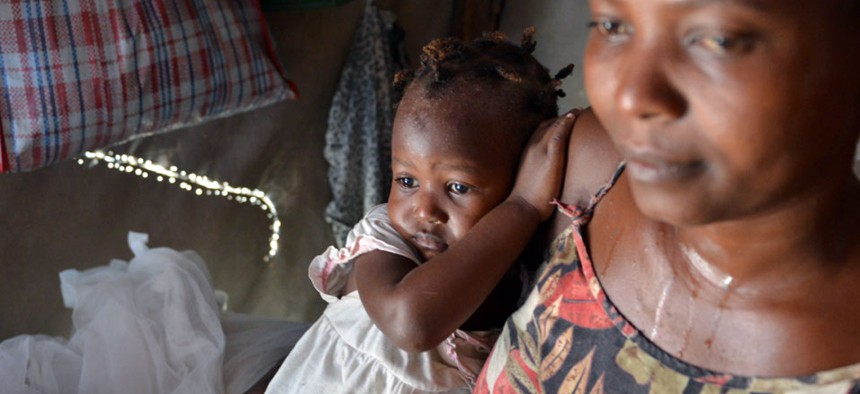Can You Forecast the Spread of a Deadly Disease?

Delimene Saint Lise holds her 2-month-old daughter Gisline inside their tent home in the Delmas section of Port-au-Prince as the child suffers with Chikungunya, a newly arrived mosquito-borne illness. David McFadden/AP
DARPA has $150,000 up for grabs if you can.
How do you accurately predict the spread of a painful and sometimes deadly disease?
The Defense Advanced Research Projects Agency is hoping to do just that, with its latest crowdsourcing project.
The Chikungunya virus is spread by mosquitos, and symptoms include fever, joint pain, muscle pain, joint swelling and rash. There is no vaccine or medicine to treat the virus, and it's now been detected in the Western hemisphere.
Until recent years, the Americas had not seen a case of Chikungunya in decades. The virus originated in Africa, then spread to South and Southeast Asia, and in 2013 appeared in the Caribbean. By May 2014, 10 imported cases had been reported in Florida.
Now, DARPA wants to track and forecast the spread of the disease and is willing to pay as much as $150,000 to anyone who can do so.
The finalists with the best solutions will be invited to DARPA for the program finale meeting, where they will collaborate and share best practices.
If you'd like to throw your hat in the ring, initial submissions are due Sept. 1, 2014. Check out more information about the competition here.



